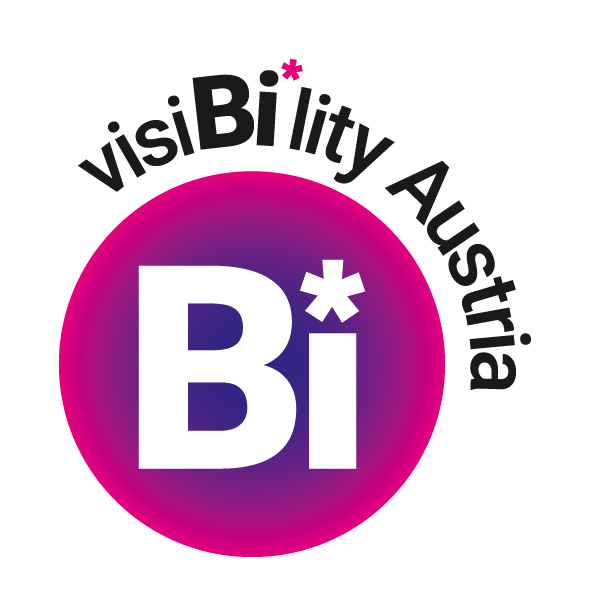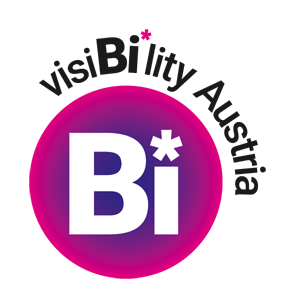Maybe you’re thinking “pardon me?!” – but let me explain….
The term “bisexual” is not only its own identity but also an umbrella term to describe a multitude of non-monosexual sexualities (ie sexuality that is attracted to one gender only). The term has existed for a while, but it’s not clear who coined it. But this is also why we often write bisexual*, bi* and it’s why we’re called visiBi*lity Austria. (Sidenote: the asterisk in German is often used to express diversity).
In 1990, the magazine Anything That Moves published the bisexual manifesto, which, among oher things, states:
Bisexuality is a whole, fluid identity. Do not assume that bisexuality is binary or duogamous in nature: that we have “two” sides or that we must be involved simultaneously with both genders to be fulfilled human beings. In fact, don’t assume that there are only two genders. Do not mistake our fluidity for confusion, irresponsibility, or an inability to commit. Do not equate promiscuity, infidelity, or unsafe sexual behavior with bisexuality. Those are human traits that cross all sexual orientations. Nothing should be assumed about anyone’s sexuality, including your own.
Anything That Moves Manifesto
Unfortunately, the notion that “bi means two” is still prevalent, especially in German speaking countries, where bisexual activism has been almost non-existant and definitely ignored. Not only the 1990 Bisexual Manifesto clearly states that bi definitely means more than two: One of the most common and, to be frank, best definitions of bisexuality is from author and activist Robyn Ochs:
I call myself bisexual because I acknowledge that I have in myself the potential to be attracted–romantically and/or sexually–to people of more than one gender, not necessarily at the same time, in the same way, or to the same degree.
Humans love themselves some labels and even though we wish there wasn’t a need for them, in the world we live in now, labels can still help you find yourself and they definitely give a sense of community. At the same time labels aren’t static, they can change, just like sexuality and attraction. Of course every label or identity under the bisexual umbrella is its own identity and should not be questioned. Here are some examples (without making a claim to be a complete list or to be 100% correct; as we know from the term “bisexual” meanings can change all the time):
- –romantic/-sexual: The ending -romantic means specifically romantic attraction, whereas -sexual means sexual attraction. The latter is also often used as an umbrella term (see heterosexual, homosexual).
- queer: also an umbrella term that can be its own identity. It’s often used as a synonym for the LGBTQIA+ community (for example queer people). It is worth noting that queer is also a slur in English and not everybody is comfortable being described as queer.
- fluid: emphasizes the fluidity of attraction.
- pansexual, -romantic: attraction to people independent of their gender.
- polysexual, -romantic: attraction to more than one, but not all genders.
- bi-curious: people that may have been exclusively hetero- or homosexual in the past, but are questioning that, or maybe are curious.
- non-monosexual: another umbrella term that can be used to describe the variety under the bisexual umbrella. (Everything that isn’t 100% hetero- or homosexual is, by definition, non-monosexual. However if someone wants to use that label or that umbrella term is up to them.)
- bi-dyke: women or non-binary people who are primarily attracted to women and use the term dyke.
- homoflexible: people who are mostly homosexual but see the potential in themselves to be attracted to someone of a different gender, under the right circumstances.
- heteroflexible: people who are mostly heterosexual but see the potential in themselves to be attracted to someone of the same gender, under the right circumstances.


